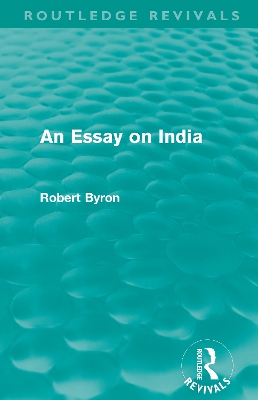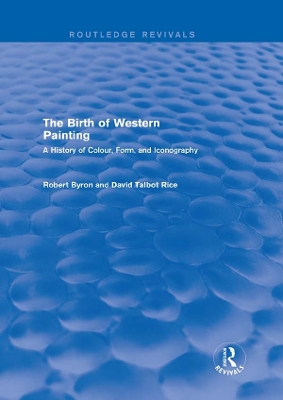Routledge Revivals
3 total works
First published in 1931, Robert Byron’s Essay on India evaluates the state of colonial rule in India and analyses the contemporary problems facing the country.
Based upon Byron’s travelling experiences within India in 1929 as a correspondent for the Daily Express, the work explores political factors more fully than...
Read moreFirst published in 1931, Robert Byron’s Essay on India evaluates the state of colonial rule in India and analyses the contemporary problems facing the country.
Based upon Byron’s travelling experiences within India in 1929 as a correspondent for the Daily Express, the work explores political factors more fully than in Byron's earlier writings, evaluating the successes and failures of British colonialism in the region.
The Birth of Western Painting (Routledge Revivals)
by Robert Byron and David Talbot Rice
First published in 1930, this book deals with Byzantine art, not as an isolated province, but as one intimately connected with the subsequent history of European painting. After a summary of the whole question in its relation to modern art, the second chapter opens with a novel analysis of...
Read moreFirst published in 1930, this book deals with Byzantine art, not as an isolated province, but as one intimately connected with the subsequent history of European painting. After a summary of the whole question in its relation to modern art, the second chapter opens with a novel analysis of the iconoclast controversy, and shows how it was only by this movement that Hellenistic naturalism was finally vanquished and the seed of interpretational art planted in Europe in its stead. The third chapter reveals how this seed was nourished by the Constantinopolitan Renascence, and how that event, combined with the increasing humanisation of religious emotion, culminated, not only in Duccio and Giotto, but in the equally important work of their contemporaries at Mistra and Mount Athos. A detailed account of these works is given and in the last part of the book, the mystery of El Greco is finally resolved.
The book is based, not only on extensive research but on personal observation of nearly all the works mentioned, in Constantinople, Greece, Crete, Italy, and Spain. It is an important and exciting addition to the history of European Art and establishes, scientifically, theories which only existed in conjecture before its publication. The book includes 94 black and white plates.
First published in 1929, this highly influential study offers a historical perspective on the Byzantine Empire, from the establishment of Constantinople by Emperor Constantine around 330 AD, through to the fall of Constantinople at the hands of the Ottoman Empire in 1453 AD.
Byron's work considers the empire...
Read moreFirst published in 1929, this highly influential study offers a historical perspective on the Byzantine Empire, from the establishment of Constantinople by Emperor Constantine around 330 AD, through to the fall of Constantinople at the hands of the Ottoman Empire in 1453 AD.
Byron's work considers the empire in its entirety, assessing the highs and lows across a thousand year period. He provides insights into trade, culture, the organs of state, religion, the imperial rulers, and the battle with the Ottoman Empire, which would ultimately end in the fall of the Byzantine Empire and the end of the final remnants of the Roman Empire.


